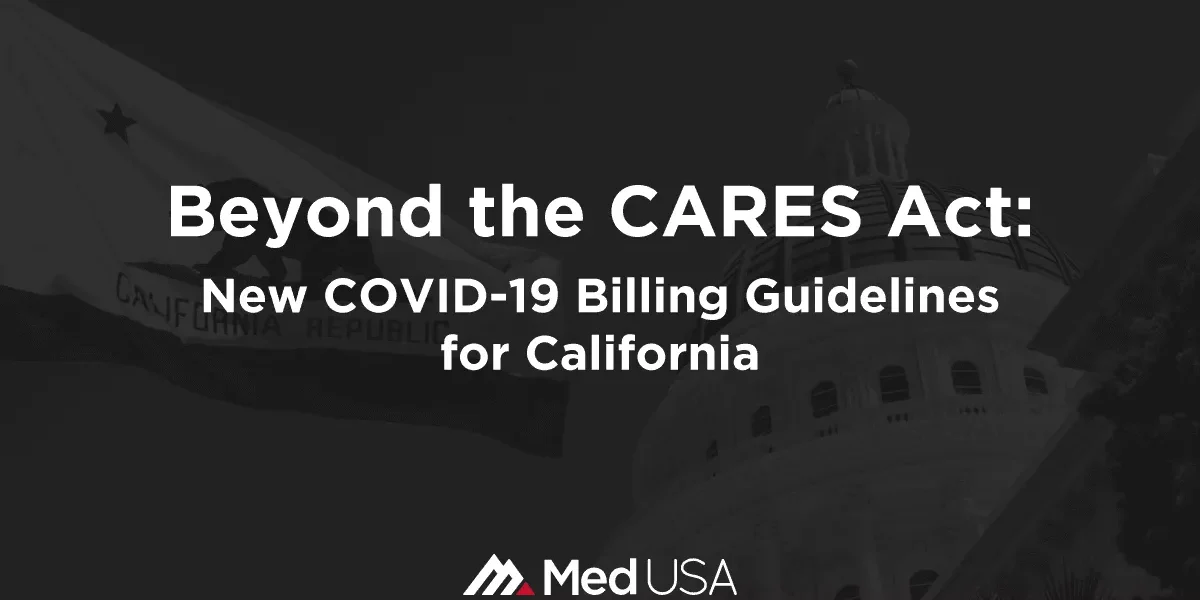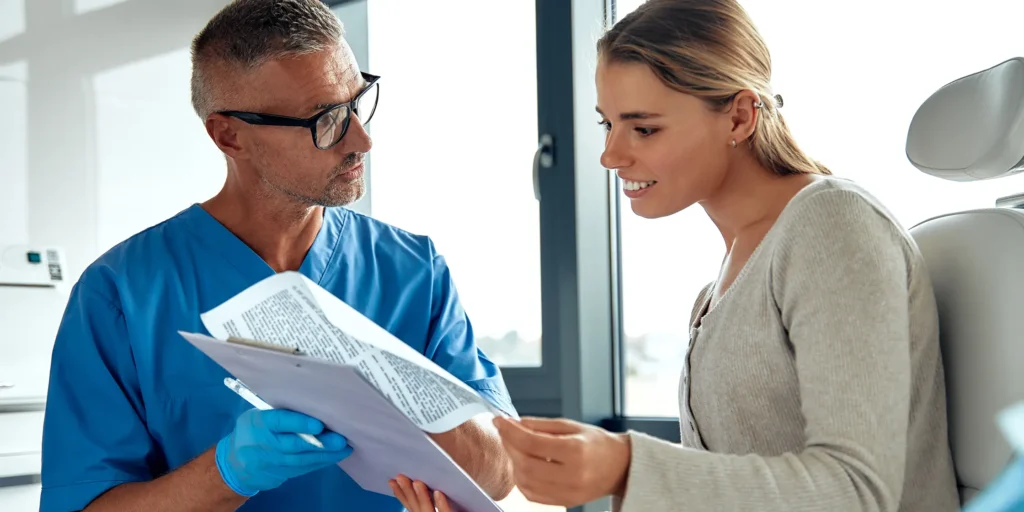
10 FAQs About Remote Patient Monitoring: Answered
Remote patient monitoring is a relatively new vertical for most providers, but that doesn’t mean it has to be overwhelming. Here are ten common questions that patients and providers have when it comes to RPM and how to offer this service:
1. What is Remote Patient Monitoring?
Remote patient monitoring is the practice of collecting, transmitting, and analyzing patient physiologic data between home-based equipment and equipment located at medical care facilities. This data must be wirelessly transmitted through a secure platform to be considered remote patient monitoring by CMS.
The data collected via RPM can be used to guide your patient care protocols, monitor the progression of chronic and/or acute conditions, and reduce the costs of providing medical services.
When paired with other modern care practices, remote patient monitoring can enhance your organization’s ability to serve your clients and improve your patients’ access to care.
2. What Are the Common RPM Management and Monitoring Codes?
As part of their efforts to expand RPM protocols, CMS has laid out a detailed order of operations for the remote patient monitoring billing process.
They have stated that the first step in the RPM process is the initial set-up of medical devices that are used to collect a patient’s physiologic data. This also includes patient education on how to use these devices.
After the physiologic data have been collected and transmitted, the next step is for physicians and qualified health care professionals (QHCPs) to analyze and interpret the physiologic data.
The final step is to create a custom treatment plan and implement said plan until patient improvement goals are attained. Following the plan until patient improvement goals are attained will bring about the conclusion of an episode of care.
CPT code 99091
Code 99091 is used to bill for collection and interpretation of patient physiologic data. It requires a minimum of 30 minutes of time in a 30-day period. This collection and interpretation of physiologic data must be performed by a physician or other QHCP, and patient consent for this service must be obtained and documented in the patient’s medical record. 99091 can be used once every 30 days.
CPT code 99457
Code 99457 is used to bill for the development of a treatment plan that is informed by the ongoing analysis and interpretation of patient data. This code includes the first 20 minutes of treatment care in a 30-day period, and requires interactive communication with the patient or the patient’s caregiver during this time. Care management services, as described by CPT 99457, can be furnished by clinical staff under the general supervision of the physician or non-physician provider (NPP).
3. What Are RPM Practice Expense Codes?
The two primary remote patient monitoring practice expense codes are 99453 and 99454.
CPT code 99453
This code is designated for the initial implementation of remote patient monitoring services, and can only be used once per episode of care. Code 99453 accounts for your staff’s time spent educating the patient on the use of the equipment and setting up monitoring devices. 99453 cannot be resubmitted unless the provider is starting a new episode of care for the patient.
CPT code 99454
CPT code 99454 is utilized for billing the costs of assessing the patient with the monitoring equipment.
Even if multiple medical devices have been issued, care team billing agents should only use 99454 once per 30-day billing cycle. The costs of operating and programming these devices for repeat monitoring should be calculated cumulatively for billing purposes.
4. How Many Days Must Be Monitored via RPM Monthly?
Both CPT codes 99453 and 99454 have a minimum monitoring threshold that must be met. Patients and care team members must have utilized the issued remote monitoring devices to collect patient physiologic data during at least 16 days in a 30-day billing period.
During the current COVID-19 pandemic, CMS is allowing RPM codes to be billed for a minimum of 2 days of data collection over a 30-day period rather than the 16 days of data collection that is normally required. When the PHE for COVID-19 expires, CMS will once again require 16 days of data out of 30 days to be collected to bill for codes 99453 and 99454.
5. Which Devices Are Eligible for Medicare Purposes?
For devices to be eligible for remote patient monitoring, they must meet the FDA’s definition of a medical device. Furthermore, eligible devices must be capable of digitally (i.e., automatically) uploading patient data.
The devices prescribed to patients must also be deemed “necessary and reasonable” for the treatment, monitoring, or diagnosis of an illness or injury. Eligible devices must be utilized to reliably collect and transmit valid physiologic data.
This data must also assist your team in managing the care plan and understanding the patient’s health status during treatment.
6. What is Considered Interactive Communication?
CPT code 99457 requires your team to engage in a minimum of 20 minutes of “interactive communication” with the patient during the billing cycle. According to CMS, “interactive communication” must include real-time two-way audio communication that is capable of being enhanced with video or other kinds of data sharing technology.
The initial 20 minutes of interactive communication should be billed using code 99457. Each additional 20-minute block of interactive communication should be reported with CPT code 99458.
Billing agents for care teams cannot utilize supplemental code 99458 unless the criteria for 99457 have already been met during that 30-day cycle. 99458 does not serve as a standalone billing code.
7. Who Can Obtain Consent and Provide RPM Services?
Qualified healthcare professionals and clinicians can provide remote patient monitoring services provided they meet the definition described by CMS.
Your clinical staff providing care under the supervision of a licensed physician or non-physician practitioner can furnish CPT codes 99457 and 99458.
In the 2021 expansion of remote patient monitoring regulations, CMS also stated that auxiliary personnel could utilize CPT codes 99453 and 99454 if they are acting under a billing physician or other practitioner’s “general supervision”.
CMS further clarified that health care teams should obtain consent for remote patient monitoring services at the time that services are provided. Auxiliary personnel or can obtain patient consent, provided that the correct forms are used, and the patient takes a positive action to affirm consent.
8. Who Can Bill or Order RPM Care?
Since remote patient monitoring solutions are classified as evaluation and management services by CMS, they can only be ordered and billed by physicians and qualified non-physician practitioners.
These individuals must be eligible to bill for Medicare E/M services. Compliance with this provision is essential if you want to avoid any billing discrepancies or reimbursement concerns.
9. Can RPM Be Used for Both Established and New Patients?
Currently, remote patient monitoring is allowed for new and established patients. CMS is temporarily allowing RPM services to be offered to new patients in response to the national COVID-19 Public Health Emergency.
Once the PHE for COVID-19 ends, CMS will again require that RPM services be offered to only established patients. The purpose behind limiting RPM to established patients is to ensure that physicians have had an opportunity to conduct a physical exam and collect relevant medical history for the patient.
A notable exception to the established patient rule is the use of real-time interactive communication in the telehealth industry. CMS has not provided any specific guidance on the practice of conducting E/M services on new patients via this type of communication.
Medicare-approved telehealth providers are allowed to use new patient E/M codes. It appears that CMS is deferring to state clinical care standards on this issue.
We recommend consulting with your legal department to discuss the possibility of conducting remote E/M new patient assessments. Depending on the laws in your state, your organization may be able to satisfy CMS assessment requirements for remote patient monitoring via interactive electronic communication.
10. Is a Chronic Condition Required for RPM?
In 2019, CMS specifically limited coverage of remote patient monitoring services to patients suffering from chronic medical conditions. However, they modified this stance in response to the 2020 COVID-19 pandemic. Currently, CMS allows you to furnish remote patient monitoring for individuals suffering from acute conditions and/or chronic conditions.


